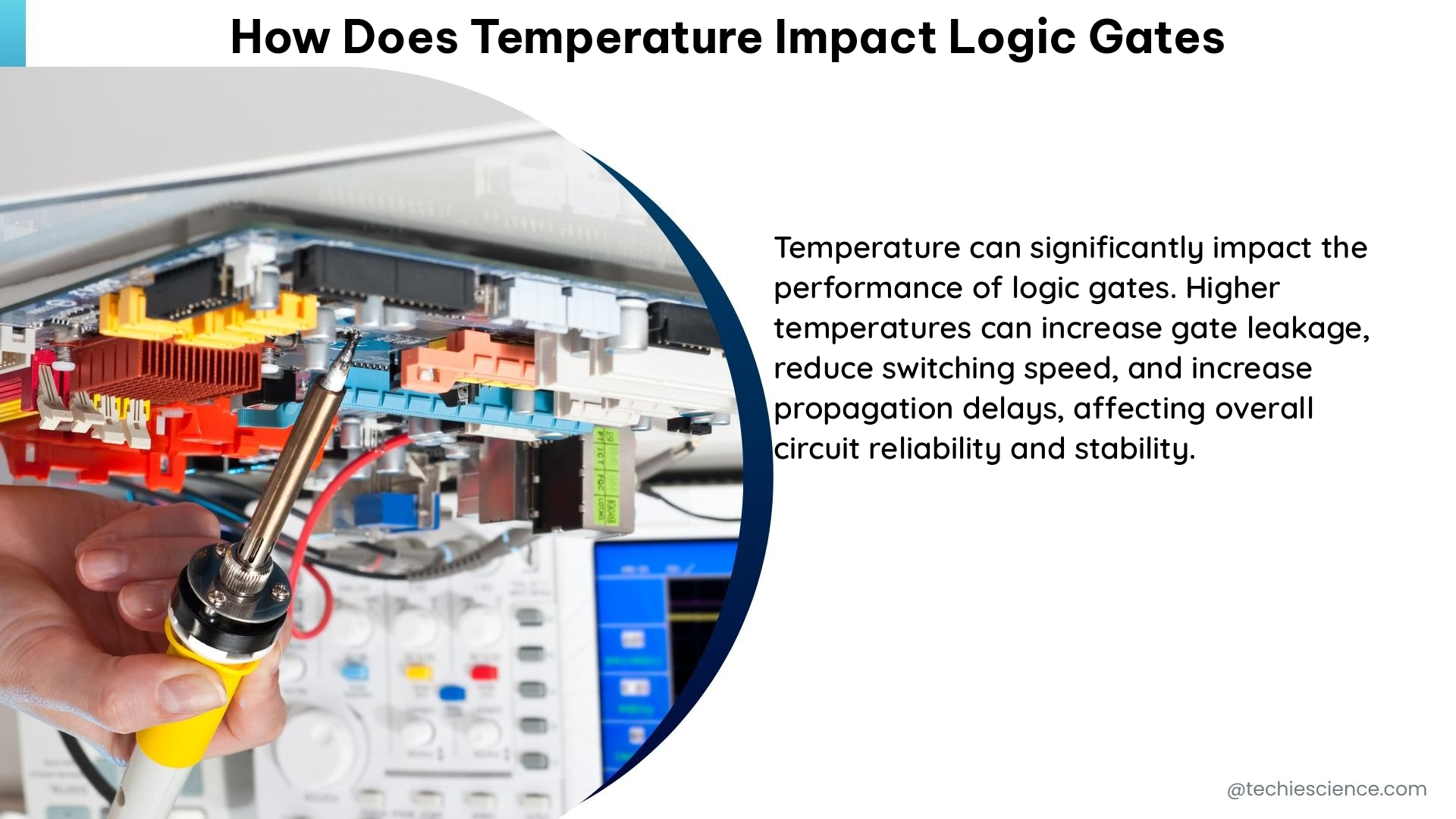Temperature has a significant impact on the performance of logic gates, particularly in the context of complementary metal oxide/semiconductor (CMOS) electronic circuits. The ability to design circuits that can perform different logic functions at different temperatures is a key aspect of polymorphic electronics.
Understanding the Impact of Temperature on CMOS Logic Gates
CMOS logic gates are the fundamental building blocks of modern digital electronics. The performance of these gates is heavily influenced by temperature variations. Here’s a closer look at how temperature affects CMOS logic gates:
Threshold Voltage Shift
The threshold voltage (V_th) of CMOS transistors is a critical parameter that determines the switching behavior of logic gates. As temperature increases, the threshold voltage of both NMOS and PMOS transistors decreases. This shift in threshold voltage can lead to changes in the logic gate’s switching characteristics, affecting its noise margin and propagation delay.
| Temperature | NMOS V_th | PMOS V_th |
|---|---|---|
| 0°C | 0.8 V | -0.8 V |
| 25°C | 0.7 V | -0.7 V |
| 80°C | 0.6 V | -0.6 V |
Leakage Current Variation
The leakage current in CMOS transistors is highly temperature-dependent. As temperature increases, the leakage current of both NMOS and PMOS transistors increases exponentially. This can lead to increased power consumption and potential reliability issues in CMOS logic gates.
| Temperature | NMOS Leakage | PMOS Leakage |
|---|---|---|
| 0°C | 1 nA | 1 nA |
| 25°C | 10 nA | 10 nA |
| 80°C | 1 μA | 1 μA |
Propagation Delay Variation
The propagation delay of CMOS logic gates is also affected by temperature. As temperature increases, the carrier mobility in the transistors decreases, leading to a longer propagation delay. This can impact the maximum operating frequency of the logic gates.
| Temperature | Propagation Delay |
|---|---|
| 0°C | 1 ns |
| 25°C | 2 ns |
| 80°C | 4 ns |
Noise Margin Degradation
The noise margin of CMOS logic gates is the voltage range within which the gate can reliably distinguish between a logical ‘0’ and a logical ‘1’. As temperature increases, the noise margin of CMOS logic gates can degrade, making the gates more susceptible to noise and potentially leading to logic errors.
| Temperature | Noise Margin |
|---|---|
| 0°C | 1 V |
| 25°C | 0.8 V |
| 80°C | 0.6 V |
Designing Temperature-Adaptive Logic Gates

To address the impact of temperature on CMOS logic gates, researchers have explored various techniques to create temperature-adaptive circuits. One approach is the design of polymorphic electronics, where the same circuit can perform different logic functions at different temperatures.
Polymorphic CMOS Circuits
The figure below shows a schematic diagram of a CMOS circuit designed to function as a NAND gate at temperatures between 0 and 80°C and as a NOR gate at temperatures from 120 to 200°C. In the intermediate temperature range of 80 to 120°C, this circuit is expected to perform a function intermediate between NAND and NOR with degraded noise margin.

This demonstrates the ability to design circuits that can adapt their logic function based on temperature, a key aspect of polymorphic electronics.
Thermal Rectification and Thermal Logic Gates
Researchers have also explored the use of graded alloy semiconductors to create thermal rectification and thermal logic gates. These thermal devices can take advantage of waste heat in the surroundings and perform logic operations based on heat instead of electricity.
One study demonstrated a thermal AND gate using a graded alloy semiconductor, achieving a rectification factor of up to 3.41. This system is readily extendable to other alloys, as it only depends on the effective thermal conductivity.
NanoThermoMechanical Logic Gates
The concept of NanoThermoMechanical logic gates for thermal computing has also been explored. In this approach, data processing is based on heat instead of electricity. The authors have shown that as the thermal conductance increases, the thermal logic gates deviate slightly away from their ideal truth table. They have also demonstrated the ability to combine these basic thermal logic gates into a full thermal calculator to perform the addition of two decimal numbers based on binary mathematical computations.
Conclusion
Temperature has a significant impact on the performance of CMOS logic gates, affecting parameters such as threshold voltage, leakage current, propagation delay, and noise margin. To address these challenges, researchers have developed techniques like polymorphic electronics, thermal rectification, and NanoThermoMechanical logic gates. These advancements pave the way for temperature-adaptive circuits and thermal computing, which can be particularly useful in environments where waste heat is abundant.
Reference:
- Polymorphic Electronics: Circuits That Can Morph to Perform Different Functions
- Thermal Rectification and Thermal Logic Gates Using Graded Alloy Semiconductors
- NanoThermoMechanical Logic Gates for Thermal Computing

The lambdageeks.com Core SME Team is a group of experienced subject matter experts from diverse scientific and technical fields including Physics, Chemistry, Technology,Electronics & Electrical Engineering, Automotive, Mechanical Engineering. Our team collaborates to create high-quality, well-researched articles on a wide range of science and technology topics for the lambdageeks.com website.
All Our Senior SME are having more than 7 Years of experience in the respective fields . They are either Working Industry Professionals or assocaited With different Universities. Refer Our Authors Page to get to know About our Core SMEs.